Blog
8 Basics to Health and Safety on a Long Distance Cycling Tour
HOW TO PREPARE: An 8 part series to get you ready for your first TDA tour. Click here to read more.
Once you have packed all the right gear, prepared your body physically, and made your way to the start of your big cycling adventure, how do you give yourself the best chance of success? We all have big questions when we envision our cycling adventures? Will I get sick? What if I crash? What if I’m robbed? And the list goes on…
We recently interviewed Jen Reid, a UK doctor and former Tour d’Afrique medic, who discussed some of the most common ailments and injuries on a cycling expedition.
In this blog post we break down the 8 most important things you can do to give yourself the best shot at success and enjoyment on your cycling adventure. Remember, it is often when you overlook these simple things, that you put yourself at risk of an early end to your adventure.
This is an in-depth post so please use these links to jump to specific topics.
- Reduce Your Risk of Accidents
- Respect the Wildlife
- Avoid Negative Interactions
- Prevent Numbness in Your Hands
- Deal with Saddle Sores Early
- Deal with a Stomach Bug
- Manage Heat and Sun Exposure
- Learn to Eat a Healthy Variety
1. Reduce Your Risk of Accidents
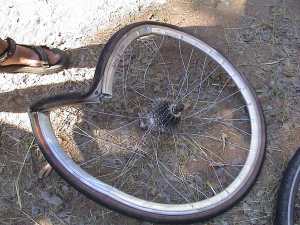 On any tour, vehicular traffic poses a risk. At TDA, we do our best to scout routes in advance to take cyclists off the busiest roads and onto smaller roads whenever possible. This can result in less than ideal road surface conditions, but it’s a trade-off necessary to prevent exposure to dangerous traffic. It’s something all touring cyclists should consider when planning their routes. You will always have some areas with heavy or dangerous traffic conditions – especially in and around larger towns. Riders always need to obey local traffic laws and be alert at all times.
On any tour, vehicular traffic poses a risk. At TDA, we do our best to scout routes in advance to take cyclists off the busiest roads and onto smaller roads whenever possible. This can result in less than ideal road surface conditions, but it’s a trade-off necessary to prevent exposure to dangerous traffic. It’s something all touring cyclists should consider when planning their routes. You will always have some areas with heavy or dangerous traffic conditions – especially in and around larger towns. Riders always need to obey local traffic laws and be alert at all times.
Wearing high visibility gear such as reflective clothing and installing flashing taillights are great ways to keep yourself safe. Being vocal and using hand signals to warn others riders of vehicles, potholes and other dangers you encounter is also a good idea.
Accidents Not Involving Vehicles
Each year on TDA tours, the majority of accidents that result in a rider being injured and even having to return home prematurely are entirely preventable. When starting a steep and/or rough descent and when entering villages or urban areas, reduce your speed, be alert and ride cautiously. There have been some unfortunate occasions where riders have fallen or run into a pedestrian at high speed. Assisting injured riders or local pedestrians in isolated, remote areas is difficult at the best of times.
2. Respect the Wildlife
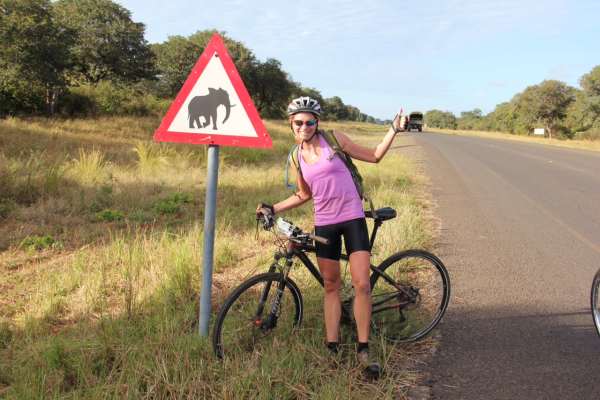 It’s possible you will cycle past an elephant at some point if you are cycling in Botswana. You might see a bear or a moose if cycling in British Columbia or the Yukon. It is very important to educate yourself in advance about how to act around wild animals. On TDA tours, listen closely to the tour leader’s advice.
It’s possible you will cycle past an elephant at some point if you are cycling in Botswana. You might see a bear or a moose if cycling in British Columbia or the Yukon. It is very important to educate yourself in advance about how to act around wild animals. On TDA tours, listen closely to the tour leader’s advice.
Dealing with Dogs
Dogs like chasing people on bicycles. That’s a fact, the world over. If you get chased by a dog, the best thing to do is to get off your bike, keep your bike between you and the dog and walk away slowly. Usually the dog will become much less interested once you get off your bike and move away from its territory. You should also talk to your doctor about rabies vaccinations before departure.
Don’t Underestimate the Insects
Taking simple precautions can significantly reduce the risk of insect-borne diseases such as malaria, West Nile virus, tick-borne encephalitis and many other viral and parasitic diseases. Mosquitoes, ticks, sand flies, black flies and spiders can all cause not only painful bites or skin sores, but serious illnesses. At dusk, and at other times when insects are biting, cover up as much as possible. Wear long-sleeved shirts, pants and socks. Use an insect repellent containing DEET on exposed skin and clothing. Spray your tent and/or sleeping area with insect repellent. Try to avoid areas of stagnant water where mosquitoes breed and also beware of dense brush areas where ticks may live.
3. Avoid Negative Interactions
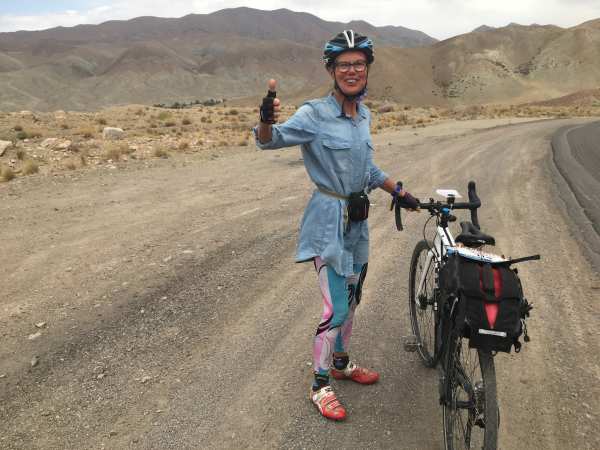 There have been a few occasions where a demonstration has occurred in a town or village that TDA was cycling through and in these cases there is always the possibility of confrontations with police or protesters. It is rare, and no one on a TDA tour has ever been harmed due to this. Our staff and vehicles are spread across the route each day and are always in communication with each other. In this way, we are able to relay instructions to cyclists as to what to do in case of an event like this. Typically, we take a precautionary approach and bide our time before crossing the town or finding an alternate route.
There have been a few occasions where a demonstration has occurred in a town or village that TDA was cycling through and in these cases there is always the possibility of confrontations with police or protesters. It is rare, and no one on a TDA tour has ever been harmed due to this. Our staff and vehicles are spread across the route each day and are always in communication with each other. In this way, we are able to relay instructions to cyclists as to what to do in case of an event like this. Typically, we take a precautionary approach and bide our time before crossing the town or finding an alternate route.
For independent cyclists, always get the latest news as you travel along. Ask local people what the road and safety conditions are in the region further along the road you are travelling on. Local advice is often the most current and relevant.
Avoiding Theft
A common threat to personal safety is having electronics such as a phone or camera stolen. If you are walking in a densely populated area or in an area that is not familiar to tourists, it is important to be discreet with expensive possessions and to keep your phones and cameras well hidden. Cash, passports and other expensive or important items should be kept in your hotel room and locked in a safe whenever possible.
Conservative Dress on and off the Bike
In countries or regions that are more strictly religious or conservative, it is important to dress appropriately, making your intermingling with the locals that much easier and enjoyable. This means loose fitting pants (men and women) and long sleeve shirts (women) while out and about in places like Iran, Sudan and Egypt. While on the bike, we suggest a pair of loose-fitting shorts to go over your spandex shorts, as well as long sleeve jerseys. As well, women should bring something like a sari with them to wrap around their waists and cover their legs when getting off the bike in towns or at shops along the way. Sleeveless, low cut or otherwise revealing jerseys and shorts will attract unwanted attention. While most people have wonderful and positive interactions in these countries, we highly recommend in Egypt, Iran and Sudan that women not ride alone. Here is something further reading on cycling Iran as a woman.
4. Prevent Numbness in Your Hands
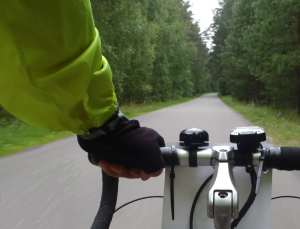 Handlebar palsy (or ulnar nerve neuropathy) is a problem common on long cycling tours and occurs when the ulnar nerve in the palm of your hand becomes irritated and inflamed due to pressure on it and road vibrations while cycling. Symptoms include pins and needles in the little and ring finger, decreased movement and grip strength in the fingers and in some cases severe pain. Some people are more prone to ulnar nerve neuropathy than others but it can also be the result of bike set up and riding technique.
Handlebar palsy (or ulnar nerve neuropathy) is a problem common on long cycling tours and occurs when the ulnar nerve in the palm of your hand becomes irritated and inflamed due to pressure on it and road vibrations while cycling. Symptoms include pins and needles in the little and ring finger, decreased movement and grip strength in the fingers and in some cases severe pain. Some people are more prone to ulnar nerve neuropathy than others but it can also be the result of bike set up and riding technique.
A good tip to try to prevent symptoms is for flat bar riders to use ergonomically shaped handlebar grips and bar ends. Cyclocross riders can double tape their handlebars to provide more padding over the ulnar nerve. Wear well-padded cycling gloves and take a second pair as these will wear out over time. Nerves take a long time to recover and it can take weeks or months for symptoms to resolve. If untreated, there is a risk of some permanent loss of strength and sensation in the fingers. Always speak to the tour medic or a doctor at a local hospital if you are getting symptoms that are not resolving. On our supported tours, the tour mechanic can also help to optimize your bike set up.
5. Deal with Saddle Sores Early
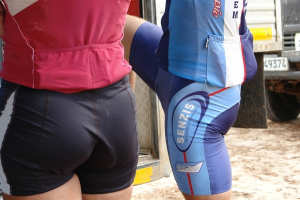 Almost everyone on a cycling tour suffers from some degree of ‘bike bum’ at some point. This can range from minor chafing and inflammation to skin breakdown. At worst, the skin can become an open wound, infected or an abscess can form, requiring medical intervention and time off the bicycle.
Almost everyone on a cycling tour suffers from some degree of ‘bike bum’ at some point. This can range from minor chafing and inflammation to skin breakdown. At worst, the skin can become an open wound, infected or an abscess can form, requiring medical intervention and time off the bicycle.
A saddle sore is usually due to prolonged or repeated pressure, causing an area of tender or broken skin. In cyclists, this usually occurs on the ‘sit bones’ on both buttocks. The best treatment for saddle sore is prevention. Saddle sores on a multi-day tour where you are spending hours a day in the saddle are much more than an inconvenience. Don’t underestimate how disruptive this can be.
Before departure you should train regularly on your bike so that your bottom is used to long days in the saddle and that you know your bike set up, seat height and saddle are right and comfortable for you. Wearing a clean pair of shorts every day is also key. Consider bringing a mix of different brands and stitching so that you aren’t repeatedly putting pressure on the same areas of your backside. It is a good idea to change into loose, clean clothing as soon as your day’s ride is complete, ideally after having a shower.
Anti-chafing or chamois creams should be applied liberally each day – both on your skin and on the inside of the cycling shorts on the padded parts with the most contact and pressure points. Make sure to test out different creams in advance and find the one that works best for you (you might be allergic to chemicals in certain brands).
Remember that on a TDA tour, our medic will have seen many saddle sores so it is important to talk to them if you develop painful saddle sores. It is much easier to treat a saddle sore early on and hopefully that means you can continue to ride, rather than letting it progress to an open or infected sore.
6. Deal with a Stomach Bug
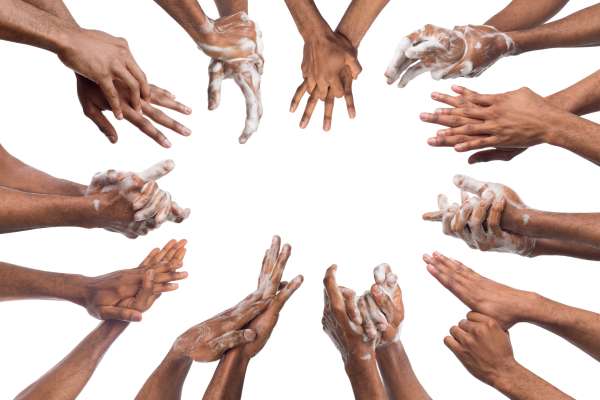 Gastrointestinal illness is a common occurrence during a long distance cycling tour in foreign countries. Riding long distances can make your body fatigued and suppress your immune system, making you more prone to picking up a gastrointestinal illness. Bacteria causing gastrointestinal upset are usually spread by contact (i.e. touching a contaminated surface, then eating with bacteria still on the hands). The best prevention from getting unwell is good hand hygiene.
Gastrointestinal illness is a common occurrence during a long distance cycling tour in foreign countries. Riding long distances can make your body fatigued and suppress your immune system, making you more prone to picking up a gastrointestinal illness. Bacteria causing gastrointestinal upset are usually spread by contact (i.e. touching a contaminated surface, then eating with bacteria still on the hands). The best prevention from getting unwell is good hand hygiene.
In most cases the treatment for diarrhea is rest and good hydration, replacing the fluid and salts that you have lost with oral rehydration salts. With adequate rest, most diarrhea resolves quickly and without the need for antibiotics. Always talk to the tour medic or a local clinic for advice and before commencing any anti-diarrheal medication.
Wash Your Hands Often
When travelling with a group of cyclists, who live and eat together, hygiene is crucial. Hand washing is the most important thing you can do to ensure the health of your group. It is the easiest and most important thing that you can do to maintain good hygiene. So wash your hands before meals and after using a bathroom and anytime you will be touching things shared by the group – tables, chairs, utensils, bikes, bike pumps and so on. Assume every surface you touch is a contaminated surface and carry hand sanitizer with you at all times. This is to prevent the transmission of communicable illnesses among the group. Having a heightened awareness of your personal hygiene is important for your own health and that of your cycling friends and – just as important – the health of the local communities you are passing through. Independent cyclists should feel equally responsible to the local population as our cyclists are to each other.
7. Manage Heat and Sun Exposure
 Along with dehydration, preventing heat exhaustion and heat stroke are primary concerns on any cycling tour. Temperatures may be very high and in many areas shade might be sparse. While in the sun, wear light-coloured, lightweight, heat-reflective clothing, gloves and a helmet. Use a sunscreen with a minimum SPF of 30 that protects from both UVA and UVB rays, and reapply this several times a day, remembering to cover your ears and the back of your neck. Lip balm with SPF 30 or higher is also highly essential or use zinc cream if you are already prone to sun sensitivity. Your eyes are also sun-sensitive and should be protected from UVA and UVB rays with good-quality sunglasses. Sunglasses will also provide some protection from dust.
Along with dehydration, preventing heat exhaustion and heat stroke are primary concerns on any cycling tour. Temperatures may be very high and in many areas shade might be sparse. While in the sun, wear light-coloured, lightweight, heat-reflective clothing, gloves and a helmet. Use a sunscreen with a minimum SPF of 30 that protects from both UVA and UVB rays, and reapply this several times a day, remembering to cover your ears and the back of your neck. Lip balm with SPF 30 or higher is also highly essential or use zinc cream if you are already prone to sun sensitivity. Your eyes are also sun-sensitive and should be protected from UVA and UVB rays with good-quality sunglasses. Sunglasses will also provide some protection from dust.
Many common over-the-counter and prescription drugs such as antihistamines, antibiotics and oral contraceptives can increase your risk of photo sensitivity and therefore sunburn. Consult with your doctor or pharmacist to see if there are precautions you should follow.
Heat exhaustion can occur rapidly if you are exerting yourself in a hot or humid environment and lose excessive body fluids and electrolytes through sweating. Without adequate fluid replacement the body can overheat and go into shock. If not treated heat exhaustion can progress to heat stroke. Heat stroke is a very serious condition, requiring urgent treatment and, at its worst, can be fatal. The body’s temperature rises and symptoms include nausea, confusion, hyperthermia, an absence of sweating and difficulty breathing.
It is important to look out for your fellow cyclists while on tour. If you suspect a fellow rider is developing heat exhaustion or heat stroke, you must get them off their bicycle, move them into the shade (if available), encourage oral hydration, cool them down and alert the tour leader, medic or your nearest clinic.
Drink Water
An adequately hydrated body should have the urge to pass urine every 3-4 hours. You will need to ensure you drink plenty of fluids throughout the day while cycling (you may require up to 8-12L each day for long and very hot days in direct sun). Remember to rehydrate at the end of each day so that you don’t start the following one already dehydrated.
For independent cyclists, always plan ahead for regions that are in drought or prone to water shortages and be prepared to carry a reserve supply of drinking water.
8. Learn to Eat a Healthy Variety of Foods
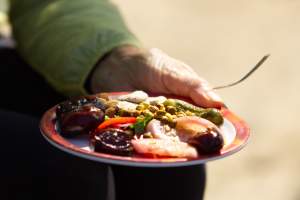 Good nutrition is important for staying healthy, especially with daily endurance exercise. Each day on a TDA tour, we will provide cooked meals, using the local produce that is available. There will be generous quantities of food at breakfast, lunch and dinner but the food supply is not endless. At times, the available food in very remote areas may be more limited and we must make sure that all riders have enough.
Good nutrition is important for staying healthy, especially with daily endurance exercise. Each day on a TDA tour, we will provide cooked meals, using the local produce that is available. There will be generous quantities of food at breakfast, lunch and dinner but the food supply is not endless. At times, the available food in very remote areas may be more limited and we must make sure that all riders have enough.
Some TDA cyclists find they like to supplement the food supplied or found locally with snacks such as cereal bars or energy bars and multivitamins, which you can bring from home with you. You may also be able to source these in larger cities along your route.
As an independent cyclist carrying your own food supply, it is very important to research your route in advance to know the likely towns and villages where you’ll be able to restock your food supply. One strategy can be carrying dry goods like pasta or dried meats that you purchased in cities, and then buying and eating fresh fruits and veggies from food markets that you pass through during your cycling days.
On TDA rest days, you will have the opportunity to try local cuisine and occasionally find some of your favourite foods from home! If a café looks clean and well run, then food is probably safe. Places packed with locals and/or travellers usually indicate a reputation for good food and hygienic practices.
How to Prepare
An 8 part series to get you ready for your first TDA tour. Click here to read more.
 REGISTER NOW
REGISTER NOW
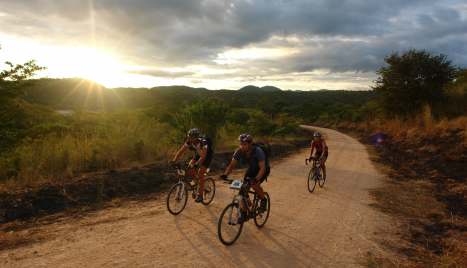
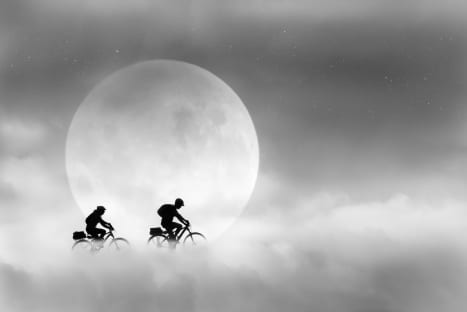

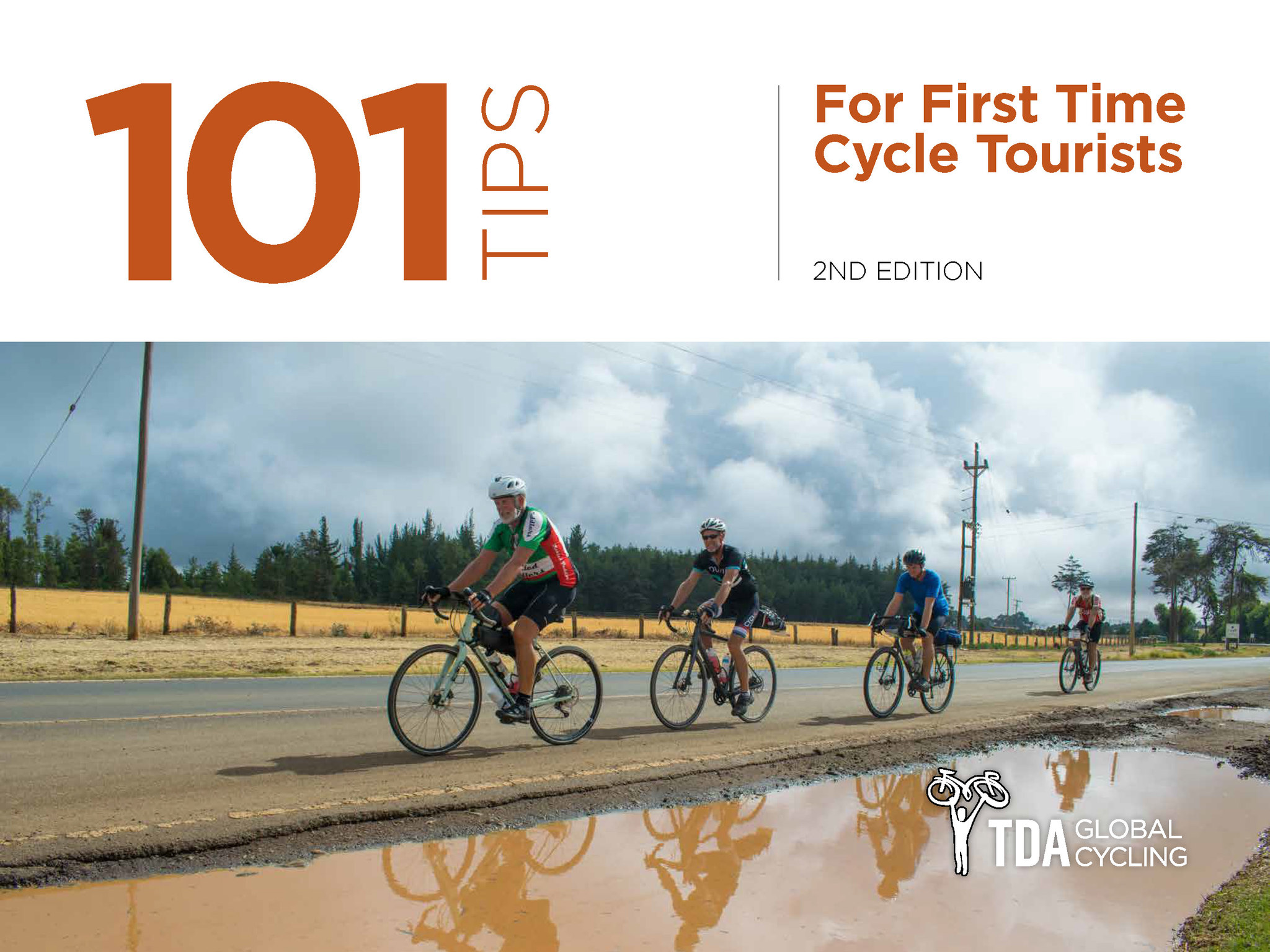
1 Comment for "8 Basics to Health and Safety on a Long Distance Cycling Tour"
Having worked in remote Asian areas, I kept this always in mind when hungry:
1)Choice between local restaurant or specialized food-stands along the road: the first seem to be better than the second but check the kitchen first., likely that food ingredients are less fresh and the kitchen a breeding place for bacteria. Food-stands are smaller have small storage and preparation place, shorter food preparation time (stuff bought food sold) and specialized what makes their food ingredients has to be used in a few hours.
2) Start a meal with fresh white bread or white rice first! It comes in your empty stomach, decreases the PH and puts a temporary plug in the stomach exhaust. The rest of the meal will have to stay longer in a more acid stomach and the plug is made of material that simpler and in general is more frequently fresh prepared that the other stuffs.